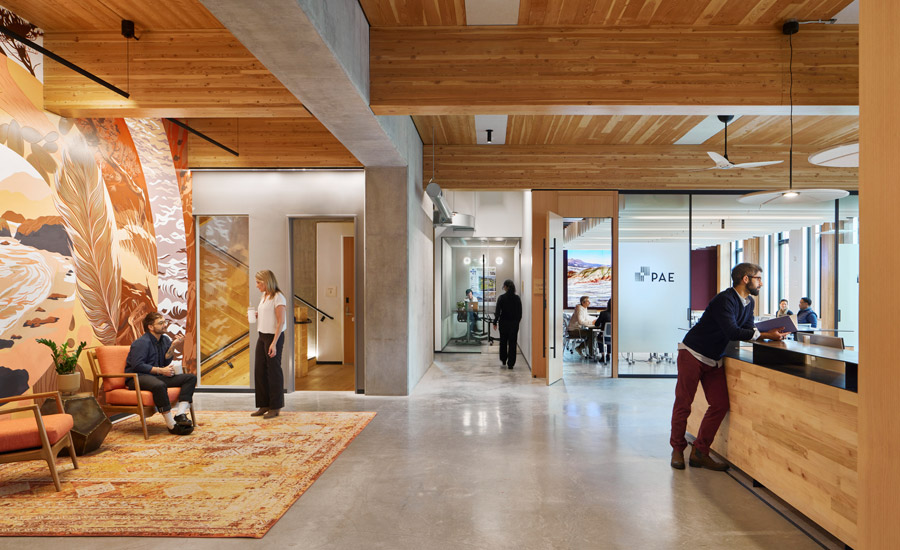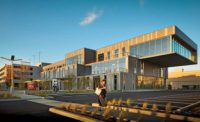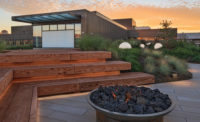ENR Northwest Best Projects
Best Office/Retail/Mixed-Use: PAE Living Building

Photo courtesy
PAE Living Building
Portland, Ore.
Best Office/Retail/Mixed-Use
Submitted By: Walsh Construction
Owner: Edlen & Co
Lead Design Firm: ZGF Architects
General Contractor: Walsh Construction
Structural Engineer: KPFF Consulting Engineers
MEP Engineer: PAE Engineers
This PAE Living Building is a dynamic structure designed and built with the goal of not just doing less harm to the environment but making a positive contribution to it. Designed and engineered to last 500 years, the structure uses less energy, water and material than comparable buildings while delivering superior levels of occupant comfort and productivity. All of the building’s needs are met via onsite water capture and onsite and offsite solar arrays. Solar generates 110% of the energy needed to run the building, which is the largest commercial urban structure with the Living Building certification.
An important aspect of the certification is meeting the ILFI imperative for healthy materials. A materials research team was established to preapprove all products and materials. An extensive check-in procedure was deployed when items were delivered to the jobsite. The total count of products considered exceeded 2,737. The team inspected, photographed and recorded each delivery to make sure it matched the database of approved products.

Photo courtesy Lara Swimmer
The five-story project is the only Living Building engineered beyond code minimums for hospital-level seismic resilience. The densely reinforced shear-wall core surrounded by glue-laminated timber (glulam) columns and beams and concrete-topped cross-laminated timber (CLT) floor diaphragms should allow the building to survive a magnitude 7.5 quake with barely a scratch.
As one of the first buildings in Portland to install a photovoltaic-powered battery storage system, the structure has a two-way power connection to the city grid that gives back excess energy. The design team was forced to get creative with a community-based approach to offsite solar due to Portland’s historic district guidelines that dictate PV cannot be visible. To comply and support the imperative of designing a building that gives back, the team funded an offsite array at the nearby Renaissance Commons affordable housing project. The resulting solar energy donation translates to approximately $20,000 in savings for the affordable housing group.




